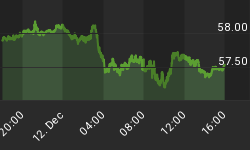Aside from whether US Q3 GDP growth will stand above the 3.0%, markets will watch the contribution from the US consumer versus that of inventory restocking. Personal consumption expenditure (PCE) is expected +3.0% after -0.9% and +0.6% in Q2 and Q1. Risk appetite will particularly welcome any evidence of a consumer-led recovery, in which case could prove positive for equities and risk currencies (EUR, GBP, CAD, AUD, NZD). In the event that a rise in inventory accumulation overshadows the increase in personal consumption, a rally in risk assets (equities, commodities and higher yielding currencies) would be accompanied by renewed pressure in USD and JPY.
While much attention has been placed on the US dollar's stabilization in the face of dissipating risk appetite, the Japanese yen faces greater upside potential against the majors, including the USD, as the currency lacks the predicament currently facing the US central bank (signalling the exit strategy w/out destabilizing US Treasuries at a time of USD vulnerability).
The clearest evidence of carry trade unwinding was cogently seen in the Aussie's biggest 1-day decline in 6 months (2.7 US cents) despite higher than expected Aussie Q3 CPI figures, which elevated the probability for a November RBA rate hike (at least 25-bps). What was initially profit-taking (early Wednesday Asia) in USD shorts translated into the fear of a short squeeze in the USD. This is the 3rd time in 8 months AUDUSD drops by more than 3.5% on a weekly basis. Next support emerges at 0.8860, followed by 0.8590.
We ease down our positive JPY stance highlighted in Tuesday's note (bearish on EURJPY, USDJPY and CADJPY ) after these pairs have shed a total of +600 points in less than 24 hours, led by CADJPY. EURJPY may stage a corrective rebound to 134.30 but the downside potential suggests 131.70 into next week. CADJPY shed 350 pts this week, looking to retest foundation at 83.20 after a possible rebound to as high as 84.60.
USDJPY merits closer scrutiny after having broken below the Oct 7 trend line support at 90.70, hitting a 1-week low of 90.30. Any disappointment from today's US Q3 GDP release (less than 3.0% and growth not boosted by consumers) will likely help drive the pair back towards the 90.10 target (50% retracement), followed by 89.70.
EURUSD narrowly escaped a break below the key $1.47 support (trend line holding since the March low which coincides with the March low in stocks) while S&P500 attempts holding at the 1,047 trend line support (also the 55-day MA). Another close below it would pave the way for 998, and $1.4410 in EURUSD, which is the 23.6% retracement.
















